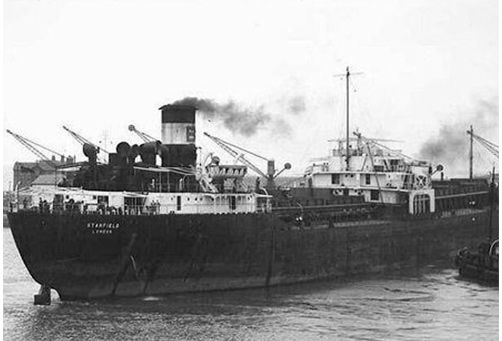
One of the most valued ships in the Mediterranean due to its conservation conditions. Built in Southampton (England) in 1896 with the name “Standfield”, although at the time of sinking it sailed under the Cypriot flag with the name “Nitsa”. It is a large wreck of 120 m in length. It set sail on June 5, 1916 from Norfolk (Virginia) to Savona (Italy) with a cargo of coal for the Italian army.
On June 25 at 23:30 hours it sank in the vicinity of Isla Hormiga, but the official date of its sinking was June 26. The cause of its sinking is still unknown. There are several versions, and of these, the most repeated and possibly justified by the hole in the starboard side, speaks of a persecution in which the Stanfield was sunk by a German U-Boat.
Another version of the accident points to it occurring when it collided with Bajo de Fuera, next to Isla Hormiga. Another hypothesis points to a collision with another ship as a result of the fact that in the war it was common to navigate without lights so as not to be detected by German submarines.
The official cause initially given by the crew was sinking by submarine attack; but, probably, the shipping company was interested for economic reasons that a submarine was to blame.
The 28 crew members and their captain escaped unharmed from the accident, managed to lower the lifeboats and, alerted by the explosion of the boilers, were rescued by the steamship “Alba.”
The ship rests on a sandy bottom at 61 meters and with the main deck between 45 m and 50 m deep.
Its state of preservation is very good. The ship is intact and resting on the bottom in a sailing position with the bow slightly higher than the stern. Damage can be observed on the starboard side that may have been caused by a torpedo. Its immense 4-bladed propeller and its 5 meters in diameter covered with gorgonians shows the size of this ship that we will have to visit in parts.
Wreck lovers will need several dives to explore it completely: the different holds, decks, the intermediate bridge and the small details are reserved only for technical divers who with their flashlights illuminate the impressive fans of gorgonians that color part of its hull and even make it difficult to pass through some corridors. Large groupers that swim majestically between the ship’s chambers or take refuge inside large tubes, and conger eels also of great size.
The wreck is located, from the port of Cabo de Palos, in a NE direction, about 6 miles away, in the open sea, without anchoring very close to buoy N that limits the Marine Reserve. To carry out this dive with guarantees it is necessary to dive with the appropriate equipment and, of course, better using Trimix to keep our senses wide awake.
To dive here: Previous dives would be carried out as training to be able to safely approach depths of 60/70 meters.
Qualification: Advanced Technical Diver, TEC65 recommended